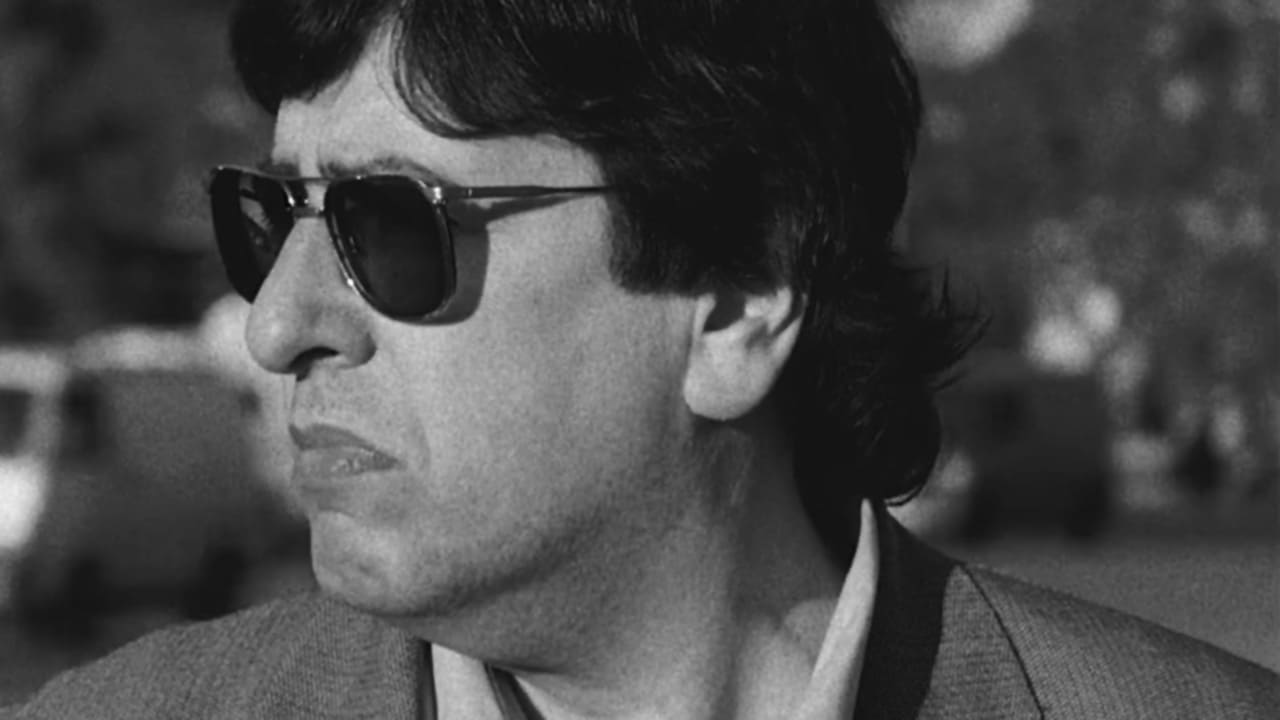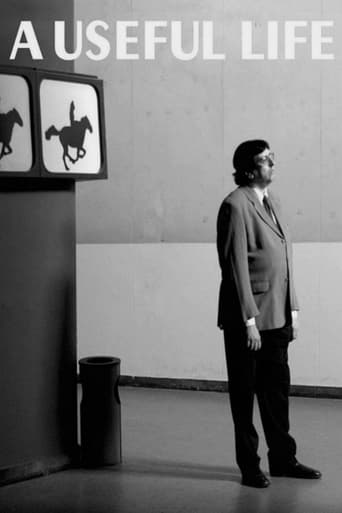


Fanciful, disturbing, and wildly original, it announces the arrival of a fresh, bold voice in American cinema.
... View MoreIt's the kind of movie you'll want to see a second time with someone who hasn't seen it yet, to remember what it was like to watch it for the first time.
... View MoreThe movie's neither hopeful in contrived ways, nor hopeless in different contrived ways. Somehow it manages to be wonderful
... View MoreIf you're interested in the topic at hand, you should just watch it and judge yourself because the reviews have gone very biased by people that didn't even watch it and just hate (or love) the creator. I liked it, it was well written, narrated, and directed and it was about a topic that interests me.
... View MoreTo elaborate on my title, it's about people who actually live in the cinema. People who believe in the sanctity of "good lies". I saw this film today in the Jerusalem Film Pestival, it's worthy of 8.5 but I have to keep my rating in natural numbers. It's worthy of 8.5 because the director is worthy of 9 at least, his control over the language of cinema is obvious from each and every frame, he uses here a non actor in the lead, with almost no facial expressions and still gets a 100% credible performance out of him, and his use of camera angles, zooms and the rest of the arsenal the art of cinema offers him, is simply outstanding. Notice that though the whole first half of the film takes place inside the cinematheque, we don't get to see a single frame of actual movie, we do get to see some titles. this could have something to do with distribution rights but it works here to perfection, because cinema is not the issue, but that's was said already, and to say more I'd have to go into specific details - I don't do that.Just go see it if you have the opportunity.
... View MoreFederico Veiroj's succinct (67-minute) feature was shot in color and converted to black and white to suggest old movies -- which are the chief concern of Jorge (played by film critic Jorge Jellinek), the protagonist. He is a big, tall, amiably nerdy, pear-shaped man with tinted glasses, out of style like his clothes. He is the manager of the Cinemateca Uruguaya of Montevideo, Uruguay, and he has been doing this for twenty-five years,but it's beginning to look like that may soon come to an end. He and the director confer, trade film series to watch, go over the declining fortunes and physical plant of their operation. The film library may be disintegrating. Ticket sales are not brisk. The projectors are in need of multiple repairs. Even the seats in the auditoriums are giving out. The director's and manager's weekly radio broadcasts are charming, smooth, but rather dry. The director uses a microphone to broadcast live translations in Spanish of the English subtitles for McTeague and von Stroheim's Greed. For a while this movie looks like it's going amiably nowhere, though its loving contemplation of outmoded technologies -- tapes, faxes, telegrams, pay phones, Russian projectors with special lights no longer replaceable -- has the atmospheric charm of a world where people are excited about Italian films of the Sixties; The Cabinet of Dr. Caligari; or the way Prokofiev's music shapes the battle sequence of Alexander Nevsky and the structure of Citizen Kane becomes clear only after multiple viewings. Then outside the Cinemateca Jorge meets an old friend called Paola (Paola Venditto), who has come for a screening. He gives her a comp ticket. He waits patiently for her to come out and invites her for coffee. No, she says, she has too many exams to grade. But she shows interest. Suddenly a little flower opens up.And a big flower closes. The corporation that has been supporting the Cinemateca announces to Jorge and his boss, the director (Manuel Martínez Carril, actual former Cinemateca director) that it can unfortunately no longer support organizations that do not show any profit. Meanwhile the landlord threatens eviction within a few days because the rent has not been paid for eight months.A Useful Life turns gradually around after the Cinemateca is closed. Jorge does a little dance, literally and figuratively. He gets an expensive haircut, one so elegant you can hardly tell his hair has been cut at all, though it's been beautifully washed and combed. He skips up and down some big marble steps, as if remembering a Fred Astaire routine. Then he goes to the university, where he enters a classroom along with the students and gives an impromptu and surprisingly fluent little lecture on the nature and necessity of lying -- till the real professor comes in and he departs. Finally he waits outside the university buildings until he finds Paola coming out of her class, and asks her: Would you like to go to the movies? "The movies?" Paola asks, pausing. Why yes, she would. And with old movie music playing in a montage of classic finales, Paola and Jorge go off into the magical darkness of the streets of downtown Montevideo as evening falls. It is a beautiful and hopeful ending.Veiroj is working with things he knows and people he knows. The actors are not far from their real selves, and unlike some cases of that, they fit into themselves comfortably. Veiroj himself worked at the Cinemateca. (It has not, in reality, been forced to close.) But above all the film captures a slow pace and gentle end-of-the-world melancholy that perhaps only Uruguay, or the Patagonia of Carlos Sorin, can evoke. Special kudos to the director for his skill in using non-actors, in particular the way he makes Jorge Jellinek come alive and seem, after all, an attractive man. The fancy hairdresser brings that out: middle- aged though he may be, Jorge has beautiful thick head of glossy black hair. His radio talks and impromptu university lecture show his silver tongue. And his towering height, as the dance up and down the stairs shows, is both impressive and nimble.Una vida útil is a simple but accomplished film, a short-short story rather than a novel. It develops its milueu and its characters with a sure touch. You might want to contrast this with Davide Ferrario's more commercial and elaborate After Midnight/Dopo mezzonotte (2004), starring Giorgio Pasotti, a film in which the magical Mole Antonelliana (the cavernous Museum of Cinema in Turin, Italy) is the setting for a very unlikely love story. Not as economical by a long sight (the plot gets a bit complicated at the end), but the setting is remarkable. Shown as part of the San Francisco International Film Festival of April- May 2011. The film opened in Uruguay in August 2010, in Canada and Spain in September. It had a brief run in New York in January 2011 and was a New York Times Critic's Pick reviewed by Jeannette Catsoulis. Global Film Initiative is the distributor.
... View MoreThe first time I saw ''A useful life'' was in a special screening for a group of old critics and journalists. It was in a little theater on a early afternoon. I must confess that I'm a film addicted, however I felt like an alien among all these people who knows film better than me. "A useful life" starts as a old comedy. When Jorge appears using old fashioned technologies, I couldn't contain my laugh because it remind me people and institutions I know in many countries who use audio or video- cassettes tapes and others obsolete media ways to do things, it woke me up tenderness. In the year of 2010 Jorge and his Cinematheque represents an obsolete way of living however it is a real way in many parts of the world. A old fashioned cinema world into the real world, "A Useful Life'' smells this contradiction showing us this bizarre way of living, and reflected warmly. I remembered other films of cinema within the cinema: Cinema Paradise, The Purple Rose of Cairo and my favorite B&W movie: Sunset Boulevard. "A useful life" takes part of this great films list, irony, humor, beauty, and an unusual ending, I like these type of movies. When the film reach its turning point and Jorge starts out his new way of life I felt the energy and enthusiastic expressions of the public, it was incredible! we were happy knowing that he and his way of living can survive, it was a common feeling in the room: cinema can be safe. To people like me, theater, B&W movies, Cinematheques, and movies like "A useful life" cannot disappear, neither dinosaurs.
... View MoreI see about 5-8 movies a year at the Toronto film festival, and I always see a few unknowns just to take a chance. Sometimes they are great, and sometimes they are incomprehensibly boring. This film represents the latter.It really felt to me like "artsy for the sake of being artsy." Shot in black and white, and slowly paced (which I have no problem with), the film mostly follow a day in the life of a man whose theatre has closed down. The director attempts to be amusing by shooting the film in ways similar to that of classic cinema. This was not amusing to me.Drawn-out, incredibly dull scenes follow. Lengthy scene of main character getting his haircut? Check. Lame references to 8 1/2? Check. The message is that the main character, once his theatre closes down, turns his own life into a movie. Unfortunately, it is not really a movie that anyone would want to watch--and definitely does not nearly approach the quality of any of the movies playing at his own cinema.You may see fans of this film giddy with the fact that the director references classic movies. I guess if you want awkward classic film references presented at an achingly dull pace which makes 70 minutes seem like 2 hours, this is the film for you.
... View More